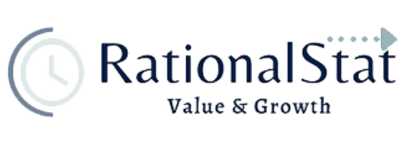
China, the economic powerhouse, has long been a focal point for global economic trends. As we navigate through 2023, the world closely watches China's economic landscape, which is marked by a discernible slowdown.
Once synonymous with breakneck growth, China's economy navigates turbulent waters in 2023. A confluence of factors, including lingering pandemic woes, a property sector slump, and global uncertainty, has cast a shadow over the economic giant. This article updates China's slowdown and highlights the key takeaways from this unprecedented shift.
This article aims to provide a comprehensive update on China's financial status, analyzing key indicators, reasons behind the slowdown, and the potential implications for the global market.
The Slowdown Unfolds: Headlines and Indicators
- Growth Declines: China's GDP growth target for 2023 is set at 5.5%, marking a significant decrease from the double-digit rates witnessed in previous decades. The first half of the year saw growth reach 5.5%, falling short of expectations and raising concerns about the sustainability of even this modest target.
- Deflationary Pressures: Consumer prices have dipped into negative territory, fueling anxiety about a potential debt-deflation spiral. This phenomenon could further dampen consumer spending and investment, exacerbating the economic slowdown.
- Weakening Exports: Global economic headwinds and geopolitical tensions have impacted China's export-driven economy. Exports have declined consistently throughout the year, adding to the pressure on domestic activity.
- Property Market Woes: The real estate sector, a significant contributor to China's growth, needs help with defaults and declining sales. This has led to financial instability and spillover effects across other sectors.
Key Takeaways: Beyond the Headlines
- Reliance on Stimulus: The Chinese government has rolled out a series of stimulus measures to bolster the economy, including infrastructure spending, tax cuts, and liquidity injections. While these measures might provide temporary relief, their long-term effectiveness remains to be determined.
- Structural Challenges: Beyond immediate headwinds, China faces deep-seated structural challenges. These include an aging population, rising income inequality, and a dependence on low-value manufacturing. Addressing these issues will be crucial for achieving sustainable long-term growth.
- Global Repercussions: A slowdown in China has global ramifications. As a major consumer and producer, China's economic woes can impact supply chains, commodity prices, and global growth.
- Uncertainty on the Horizon: Predicting the trajectory of China's slowdown remains a complex task. The evolution of the pandemic, geopolitical tensions, and the effectiveness of government policies will all play a role in shaping the future of the world's second-largest economy.
Implications for Global Markets
-
Impact on Commodities
China's reduced demand for commodities, including metals and energy resources, directly impacts global commodity prices. Countries reliant on commodity exports may experience economic repercussions.
-
Global Supply Chain Disruptions
As a significant player in global supply chains, China's economic slowdown can lead to disruptions. Businesses worldwide may need help with production delays, logistics, and sourcing raw materials.
-
Investor Sentiment
The slowdown in China's economy can influence investor sentiment globally. Financial markets may experience increased volatility as investors assess the potential ramifications and adjust their portfolios accordingly.
Government Responses and Future Outlook
The Chinese government has implemented measures to stimulate growth in response to the economic challenges. These include targeted fiscal policies, support for small and medium-sized enterprises, and efforts to stabilize the property market.
Looking ahead, uncertainties persist, and the effectiveness of policy measures remains a subject of debate. International collaboration and ongoing monitoring of economic indicators will be crucial in navigating the evolving financial landscape.
Conclusion: Navigating the New Landscape
China's economic slowdown in 2023 raises important questions about the trajectory of the global economy. Understanding the key indicators, reasons behind the slowdown, and potential implications allows businesses, investors, and policymakers to make informed decisions in an increasingly interconnected world.
As China adapts to these challenges, the global community watches closely, recognizing China's integral role in shaping the future of the international economy.
While the slowdown presents significant challenges, it also offers an opportunity for China to embark on a path of sustainable and inclusive growth. China can build a more resilient and prosperous future by addressing structural imbalances, fostering innovation, and embracing domestic consumption. The current slowdown is a crucial turning point, and the world will be watching closely to see how China navigates this challenging landscape.

Ujjwal Parwal
Co-founder and Director at RationalStat
Ujjwal is a thought leader and recognized expert in the market research and consulting field. He is the co-founder at RationalStat, a leading global market research & procurement intelligence firm with 10+ years of industry expertise.







You must be logged in to post a comment.